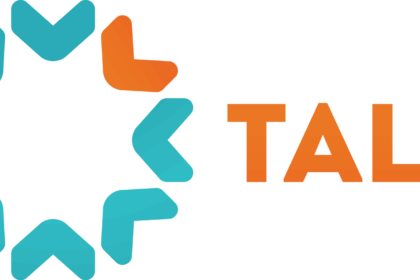This article will share the ten steps to Financial Freedom that you can take to become financially independent. You can use these steps or adapt them to your way of thinking and investing.
We all desire financial Freedom. Some would even say it is the ultimate goal in life. But what does financial Freedom entail, exactly? Is it possible to buy anything you want without worrying about money? No. That’s materialism, not financial Freedom.
Financial independence is the ability to have enough wealth to live comfortably without working for money again.
So let’s get started.
Steps to Financial Freedom in 2024
The following are the ten steps to Financial Freedom:
1. Understand Your Current Status
The first step to financial freedom is identifying where you are now financially. This step includes both your assets and liabilities.
You need a starting point to work from. If you don’t know where you are financially, how can you plan for your future?
You will need to write down the following:
- Your Current Net Worth (Assets minus Liabilities).
- How much income do you bring in every month?
- What are your age and current annual expenses?
2. Set Financial Goals
Once you know where you are, set financial goals for yourself. Goal setting is an essential component in achieving any success in life. How can you possibly get there without knowing where you want to go? You need to have a vision or idea of what you want to achieve and then use that as your destination.
Now, this is more than just setting a target for how much money you want to have in the future.
There are several factors involved here:
How Much Money Do You Want?
Set both short-term and long-term financial goals. If you only look at the short term, you’ll only be working to meet ends meet. But if you plan for the long-term, it can free you up financially. For example, if your goal is to retire by the age of 35, this could mean that you need to set aside 25% of your income every month towards savings and investments.
What Are Your Current Financial Goals?
What are you trying to achieve now? Some goals are short-term, medium-term, and long-term. Some examples are:
Starting a business. Paying for your child’s college education. Getting out of debt. Buying your first home or car. Retiring at the age of 60.
How Can You Achieve Them?
Once you know your current goals and how much money you want to achieve them, you can figure out how much money will be needed. You also need to determine the timeframe for these goals. Do you need the cash in 5 years? Ten years? Or 30 years? Most people fail because they don’t plan their goals accordingly.
After you have a clear picture of your financial goals, it is time to set a budget. Yes, even if you want to become financially independent, you still need a budget. Your income minus expenses should equal zero every month. Of course, there may always be some fluctuation from month to month, but it should average out over a year.
3. Cut Expenses and Increase Income Streams
After setting your financial goals, identify what expenses can be cut down on or eliminated. Review your current monthly bills and see which ones you can reduce or eliminate. You also need to watch for any unnecessary or discretionary purchases you make regularly.
If you currently have five different bills, maybe reduce it to two or three. You can save a lot of money by doing this! Remember that the goal is to have your income minus expenses equal to zero every month until you reach financial independence and don’t need to work for money again.
In addition to cutting back on your current expenses, you can also increase your income. There are several ways that you can do this:
Increase your monthly or annual salary. Create a side business or second job. Get a suitable investment property.
4. Develop Multiple Income Streams
Remember that the goal is to have multiple income streams, so if one of your current income streams suffers a loss of revenue, you still have the others to fall back on. This is just like diversifying your stock portfolio. If some stocks lose value, it doesn’t mean that your whole portfolio loses value as well.
5. Buy Experiences, Not Things
If you want to know how to become financially free, this is where it’s at. Instead of buying useless stuff that depreciates over time, you need to learn how to spend money on important and valuable things like travel, family time, education, etc. This goes back to goal setting because you can use the money you save to go on a trip, take lessons in something that interests you, or spend more time with family instead of working all the time.
Visualize your future self. Imagine how it would feel to be free from money worries! Picture yourself doing whatever you want for a living, traveling around the world, or spending more time with your loved ones. This will motivate you to work harder and think more intelligently to spend your money on the things that matter in life.
6. Pay Off Debt
Another critical factor in becoming financially free is to pay off your debts. If you want a quick way to save thousands of dollars on interest, all you have to do is get rid of whatever debt you have. This includes credit cards, student loans, car loans, and personal loans.
7. Invest strategically, not randomly
If you’re determined to become financially free, this is the key. You need to do your research, invest your money strategically, and not just pick a random stock or company that may or may not make money for you down the line. If you don’t know what you are doing, hire someone who does! Your best option is to hire a financial planner and work with them so they can help you become financially free
Trading is exciting and somewhat unpredictable, but if you genuinely want to become financially free, you need to invest in low-risk investments like index funds. Index funds are less likely to lose value than stocks that may have a higher rate of return and have a greater chance of losing money. In index funds, you own shares in an entire stock market, which gives you exposure to thousands of companies without having to research and monitor each one on your own.
8. Start Investing Now
Another essential step to Financial Freedom is to start investing right away, even if you’re starting with small amounts of money. If you put your money in an investment that gives you a rate of return of 10 percent, then after 20 years, it will be worth $64,000. However, if you wait until your 40s and 50s and start investing at the same rate of return, then your money will only be worth $7500 after 20 years because you lost out on ten years of growth.
9. Diversify Your Investments
Finally, one of the most important things to do if you want to become financially free is to diversify your investments. This means that you should put some of your money in things like real estate, index funds, and gold because if one of those items drops in value, the others will likely go up. This is different from diversifying your stock portfolio.
10. Track Your Spending Every Month
If you want to know how to become financially free, you need to start keeping track of where every single cent that you earn goes. This means writing down every penny you spend and analyzing your expenses to see what can be cut back on or eliminated. You also need to track all your investments, including how much money you’re making off them (or losing!)
In Summary
Financial Freedom is a great goal to have. If you want to know how to become financially free, then the best thing you can do is develop good money habits like saving, investing, managing debt, and having multiple income streams.
Working towards Financial Freedom means taking action every day. Even if it’s something small like making your lunch instead of buying it or taking a walk after dinner, keep at it, and you will be surprised by the results!













